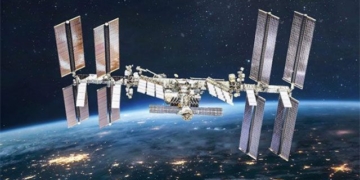New research indicates that the oscillation of the Moon’s orbit around Earth has impacted the coverage of mangrove forests across Australia, resulting in the death of 40 million trees in the Gulf of Carpentaria.
A study published in the journal Science Advances has discovered an 18.61-year cycle—known as the lunar nodal cycle—that has shaped the condition of tidal wetlands.
The lead author of the study, Professor Neil Saintilan from Macquarie University (Australia), stated, “The Moon’s orbit around Earth does not occur on a flat plane. Since the 1720s, people have known that the Moon moves up and down a few degrees.” He likened this motion to “spinning a coin—when it loses momentum, it wobbles.”
Changes in gravitational forces due to this lunar oscillation affect Earth’s tides, according to The Guardian.
Previous research conducted by NASA scientists predicted that by the mid-2030s, lunar oscillation would cause sea levels to rise, leading to tidal flooding along coastlines.

The lunar oscillation causes mass tree deaths in Australia – (Photo: AAP).
Depending on the phase of the lunar nodal cycle, “the tide can vary by as much as 40 cm” in places like the Gulf of Carpentaria, Saintilan noted.
He added, “Mangroves grow between the average high tide and the highest tide.” In areas of lower tidal ranges, mangroves are less inundated. “When trees are stressed due to losing water through their leaves, they will shed leaves.”
From 1987 to 2020, scientists used satellite imagery to quantify the extent of mangrove coverage across Australia annually. The fluctuations in canopy cover were “immediately apparent”, Saintilan said.
Along the Arnhem Coast in the Northern Territory and the Carnarvon Coast in Western Australia, researchers found that the peaks of closed canopies—where mangrove forests cover more than 80% of the land—coincided with the peak phases of tides caused by the lunar oscillation.
Scientists believe that the lunar oscillation likely contributed to the death of approximately 40 million trees in the Gulf of Carpentaria between 2015 and 2016.
At that time, the “low tidal amplitude” phase of the lunar oscillation coincided with a severe El Niño event.
Dr. Brad Tucker, an astrophysicist at the Australian National University (ANU), who was not involved in the study, likened the lunar oscillation to the bobbing of an upright object in water. He stated, “It bobs up and down every 18.6 years. If the Moon moves further up or down relative to Earth, it changes the gravitational forces.”
Another factor affecting tidal activity on Earth is that the Moon is not a perfect circle as it orbits Earth, Tucker noted.





















































